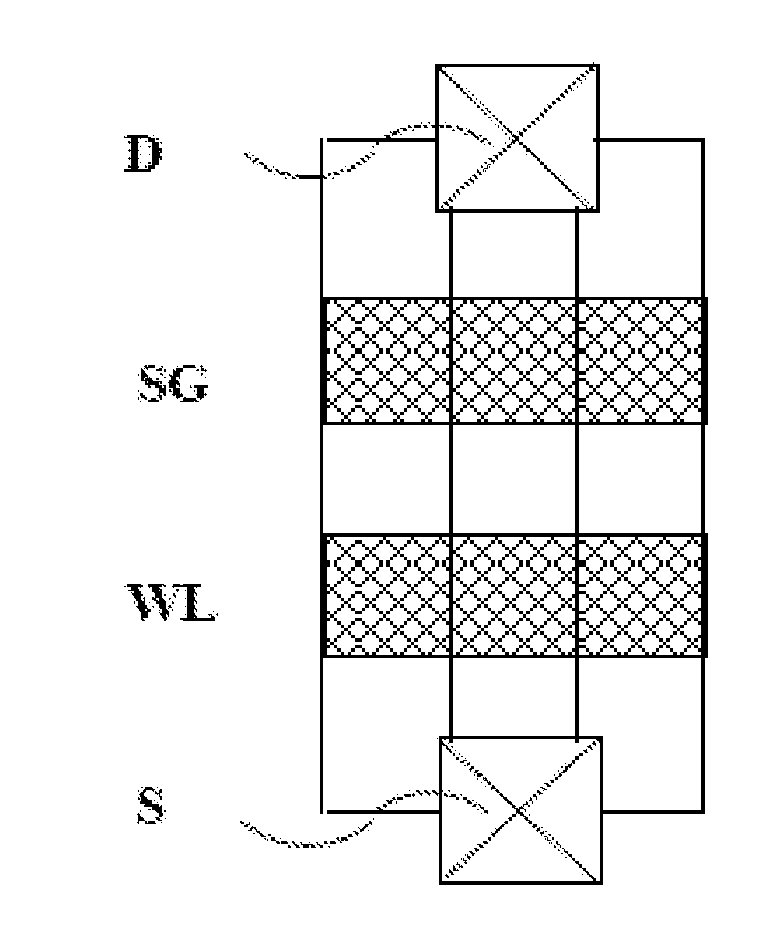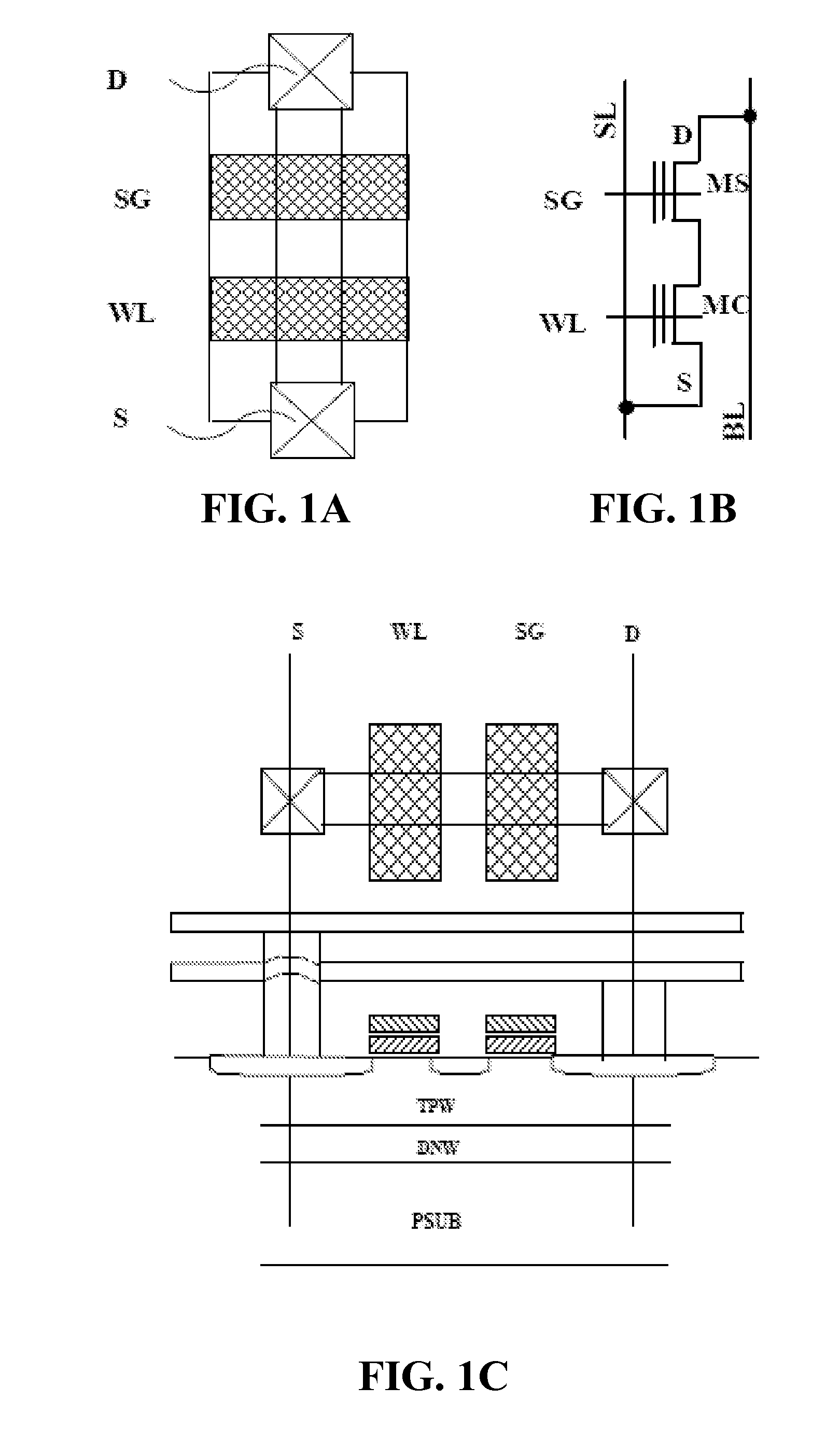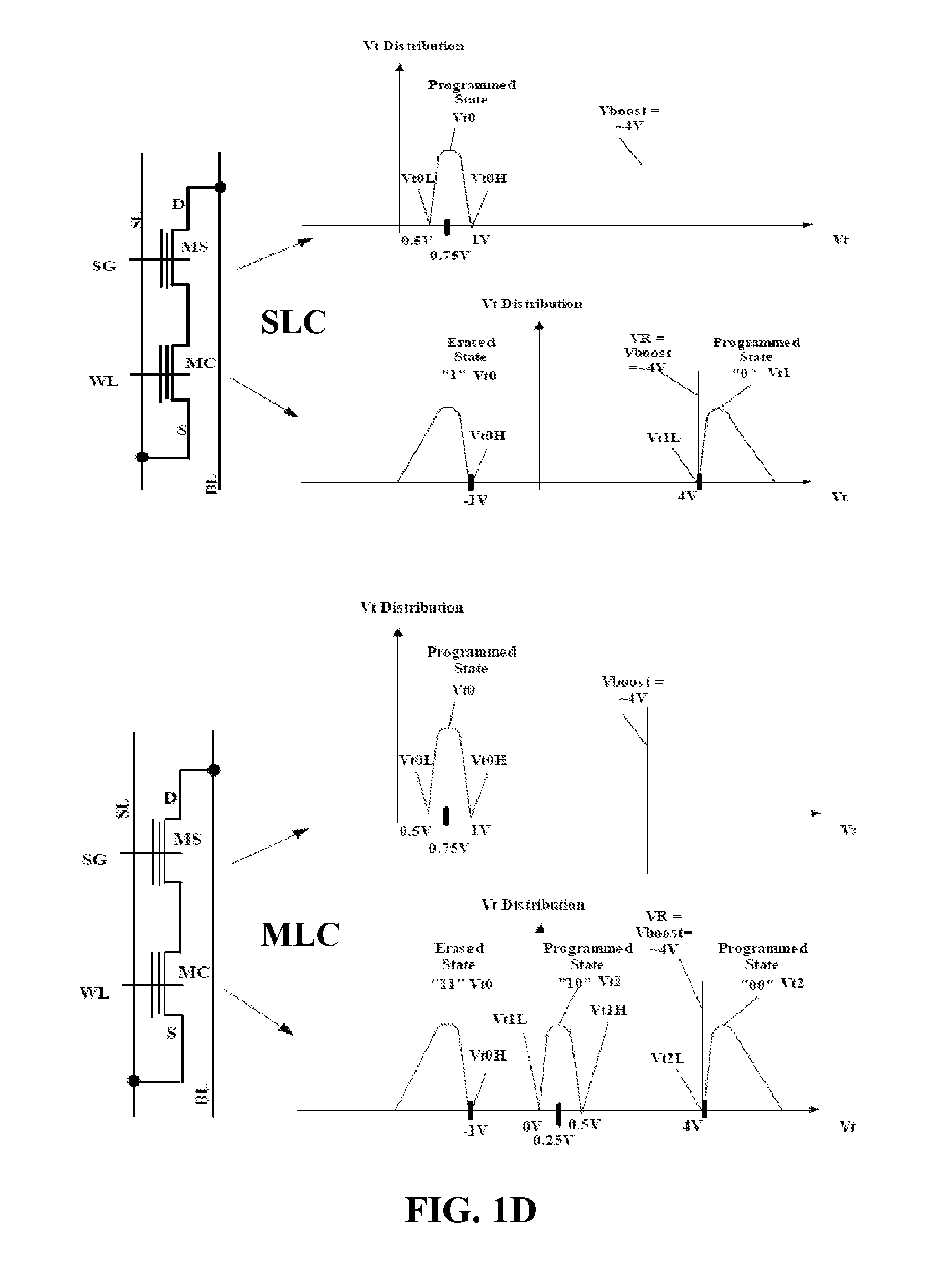Novel High Speed High Density NAND-Based 2T-NOR Flash Memory Design
a flash memory and high density technology, applied in the field of design of two transistor nor (2tnor) flash memory, can solve the problems of limiting the use of the cell in ultra high integrated levels of flash memory below 0.18 um technology, the channel length of the cell is very difficult to be scaled down, and the physical limitation of how small the cell, etc., to achieve the effect of simplifying the design of the on-chip state machine, high driving capability and high speed
- Summary
- Abstract
- Description
- Claims
- Application Information
AI Technical Summary
Benefits of technology
Problems solved by technology
Method used
Image
Examples
first embodiment
[0054]FIG. 1A is a top view of the plan layout of a floating-gate type NMOS, NAND-based 2T-NOR flash cell of the first embodiment in the present invention. The figure only shows four key connection nodes of the drain (N-active), source (N-active), select gate for accessing the device, and the cell gate of the storage device in the flash cell and they are denoted as D, S, SG and WL respectively. The S node has a half contact for a source line connection and the D node has a half for a bit line connection.
[0055]FIG. 1B shows a schematic diagram for the circuit of the NAND-based 2T-NOR flash cell according to FIG. 1A of the present invention. The access transistor MS and the storage transistor MC are both made of a 2-poly floating-gate cell. The circuit of the 2T-NOR flash cell has four terminals for D, SG, WL and S. The D node is connected to a local vertical metal bit line denoted as BL and the S node is connected to a local vertical metal source line denoted as SL. In contrast to th...
second embodiment
[0061]FIG. 2 shows the circuit diagram of a NAND-based 2T-NOR flash cell according to the present invention and the threshold voltage distributions of the corresponding SLC and MLC. In this embodiment, the storage transistor MC is a 2-poly floating-gate NAND cell while the access transistor MS is a poly1 transistor made of a double poly NMOS device with poly1 and poly2 shorted and strapped to form an access line to connect a row of access transistors. For the access transistor MS, the threshold voltage Vt is the threshold voltage of the poly1 NMOS transistor. This Vt0 is set with a preferred center value of +0.75V, ranging from +0.5V to +1V in accordance with the present invention.
[0062]For the storage transistor MC, the Vt distribution of two state SLC shows the erased state (0H=−1V) and the programmed state (>Vt1L=4V). The Vt ranges of both states can be widely spread without concern of over-erase or over-program. The Vt distribution of the three state MLC in FIG. 2 shows the eras...
third embodiment
[0063]FIG. 3A is a top view of the plan layout of a floating-gate type NMOS, NAND-based 2T-NOR flash cell of the third embodiment in the present invention. Only four key connection nodes of drain (N-active), source (N-active), select gate for accessing the device, and the cell gate of the storage device are shown and they are denoted as D, S, SG and WL respectively. The S node has a half contact for a source line connection and the D node has a half for a bit line connection.
[0064]FIG. 3B shows a schematic diagram for the circuit of the NAND-based 2T-NOR flash cell according to FIG. 3A of the present invention. The access transistor MS is made of an either poly1 or poly2 NMOS device dependent on which manufacturing process is appropriate for application. The flash storage transistor MC is still made of a 2-poly floating-gate cell. The circuit of the 2T-NOR flash cell has four terminals for D, SG, WL and S. The D node is connected to a local vertical metal bit line denoted as BL and ...
PUM
 Login to View More
Login to View More Abstract
Description
Claims
Application Information
 Login to View More
Login to View More - R&D
- Intellectual Property
- Life Sciences
- Materials
- Tech Scout
- Unparalleled Data Quality
- Higher Quality Content
- 60% Fewer Hallucinations
Browse by: Latest US Patents, China's latest patents, Technical Efficacy Thesaurus, Application Domain, Technology Topic, Popular Technical Reports.
© 2025 PatSnap. All rights reserved.Legal|Privacy policy|Modern Slavery Act Transparency Statement|Sitemap|About US| Contact US: help@patsnap.com



